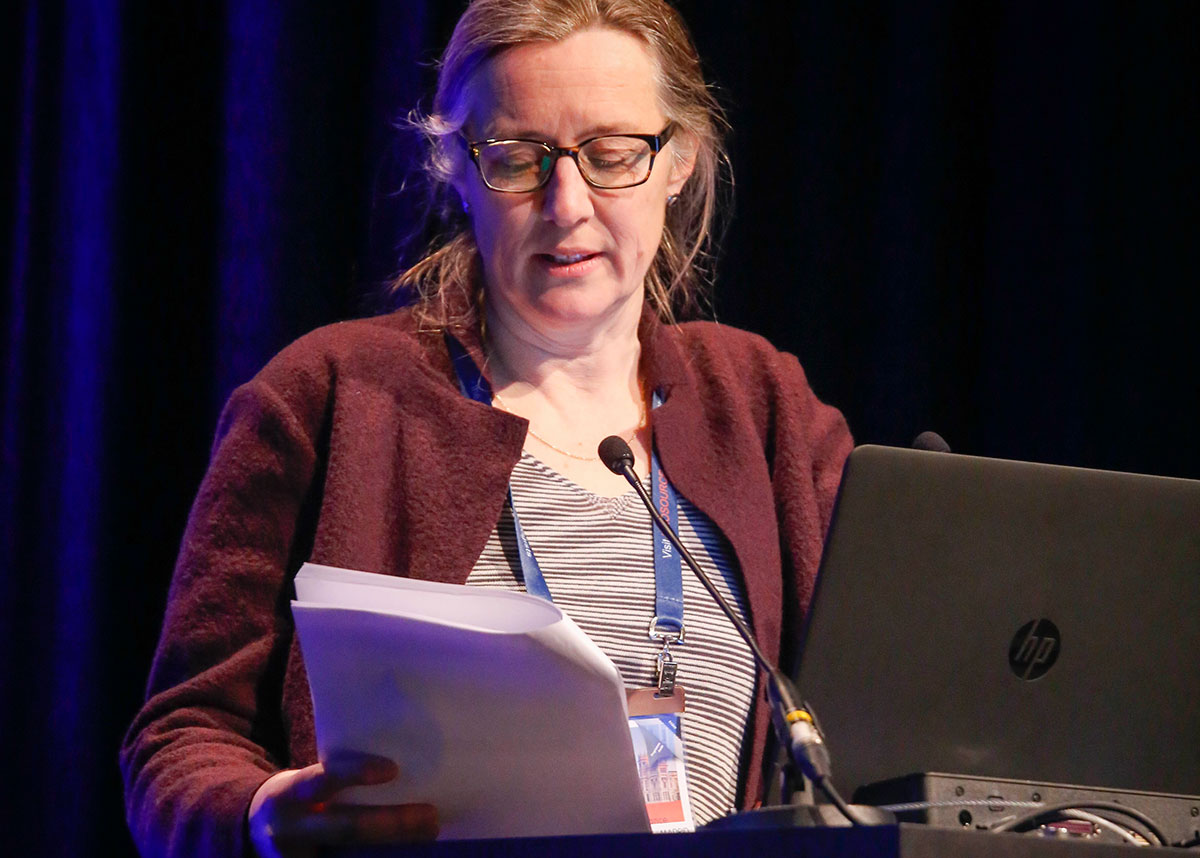Trouble shooting at workshop on indwelling catheterisation at Madrid EAUN Congress

11 May 2015
On Sunday morning, March 22, around 120 nurses attended in Madrid the workshop “Troubleshooting and quality of life in indwelling catheterisation,” which aims to give participants insights into the management and care of patients with indwelling catheters as well as managing complications, troubleshooting and quality of life (QoL) aspects.

Susanne Ohlhorst, educated as a Master in Nursing science from the University Hospital in Zürich, Switzerland, gave an excellent overview on the problems encountered with the use of an indwelling catheter. One of her main messages in case of indications for indwelling catheters was to use intermittent catheterisation, postoperative, instead of indwelling catheterisation, whenever possible!
She underscored the complications of catheterisation and said that around 30% of all patients with short-term catheters have urinary tract infections (UTI). UTIs account for 30% of all hospital-acquired infections. Leakage occurs in 11% and urethral strictures and erosions between 3% and 17% (Hollingsworth, 2013).
The complications of long-term catheterisation are described as follows: One UTI per 100 catheter days.
Patients with indwelling catheters are three times more likely to die, to be hospitalised or to require antibiotics. Urosepsis often follows on a traumatic manipulation of the indwelling catheter and the risk of bladder stones and bladder carcinoma is elevated (Drinka 2006).
To avoid leakage or catheter bypassing, nurses have to find out the reasons for the leakage. These may include kinks in the tube, UTI, blockage, hyperactive detrusor or hypersensitivity to latex. Aspects to consider and avoid leakage could include an increase in fluid intake, lemon-based drinks, the use of a valve instead of a continuous flow, or by changing the material – silicone instead of latex– and bladder instillation with mild acid solution. These options are not evidence-based but experienced-based.
Ohlhorst’s take-home message was that avoiding complications caused by indwelling catheters is one of the most important nursing tasks. To find alternatives for indwelling catheters and a thorough education of patients are two main factors on how to avoid complications.

The second part was a presentation from Mirjam Kappert, advanced nurse practitioner (Doetinchem, Netherlands). She discussed “Living with a catheter; what patients, caregivers and nurses should know.” She cited a quote from Roger Dawson who said: “It is not how long life is but the quality of our life that is important.”
Kappert focused on shared decision-making, an approach “…where clinicians and patients share the best available evidence when faced with the task of making decisions, and where patients are supported to consider options and achieve informed preferences” (Elwyn, 2010). Kappert described how to achieve this in actual practice and her take-home message emphasised the importance of always helping patients make decisions based on their wishes and the goals they have set out for themselves. For nursing teams this implies they have to act consistently and use the nursing process as a basic tool. The sessions ended with a short discussion with the audience.
Below are summaries of some of the highlights and issues discussed during the workshop:
- 28% of physicians are not aware whether their patient has a catheter or not (Toughill 2005) and it has been established that a daily assessment whether the catheter is still necessary will reduce the risk of UTI;
- In response to a query, posed to the workshop audience, asking if their hospitals has a rule requiring a daily assessment to find out if catheter use is needed, only four people in the audience raised their hands;
- To the question regarding use of evidence-based guidelines in daily practice, about 20 nurses responded in the affirmative;
- To the query whether nurses use the EAUN guidelines as a guide for their hospital’s standards, only five nurses responded in the affirmative. Since the EAUN Guideline was launched in 2013, or two years ago, good compliance or a high rate of actual adaption has not been achieved.
An important message we can learn here is the need for the EAUN to take two steps backward and discuss how we can close the gap between theoretical evidence and nursing practice.
For the next conference we will have to consider how to implement guidelines into actual nursing care or in general hospital practices, and how we integrate theoretical findings in nursing care education. Obviously, there is still a lot of work for us to do.
See you next year when we will present to you the new EAUN guidelines on male external catheters.
Ms. Veronika Geng, RN, MNSc, ICP
Workshop Chair
Manfred-Sauer-Stiftung, Lobbach (DE)
veronika.geng@msstiftung.de
European Urology Today Vol. 27 No. 2 March/May 2015

